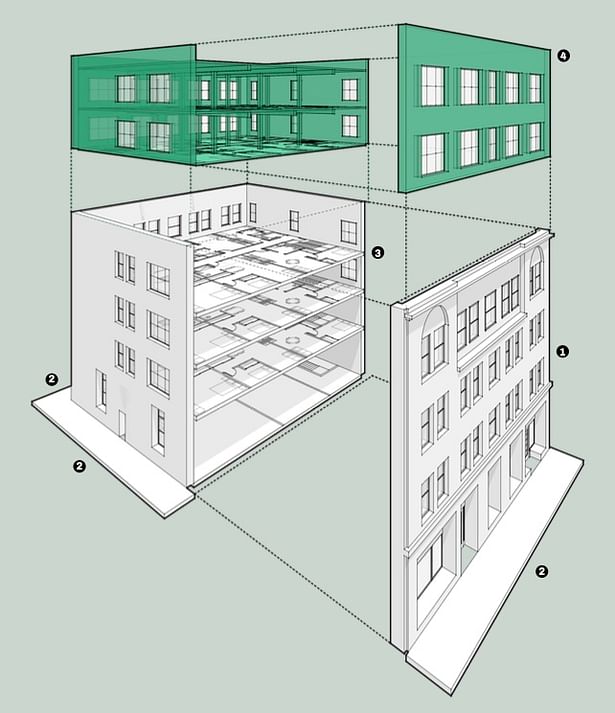
San Francisco, CA

Focused on the successful directions in office-to-residential conversions, at least one expert is creating new opportunities for small- and medium-sized properties -- the “Goldilocks zone” of successful candidate buildings.
The architecture and structural design firm the Office of Charles F. Bloszies FAIA, has recently released detailed studies showing the feasibility of converting those smaller office buildings to gainful residential and commercial uses.
An early excerpt of the study is available for review at this link:
https://we.tl/t-t55TP30EKo
"Not all office properties can be easily converted to apartments or condominiums,” says firm founder Chuck Bloszies. "The most ideal candidates are older, Class B structures fronting two or three open spaces or streets, with floorplate dimensions not too deep to allow daylight into the residential units.”
Bloszies notes that San Francisco is second only to New York in population density, but it lacks residential development in downtown commercial districts.
"Buildings in established neighborhoods at the fringes of the downtown core, close to public transit, are perfect candidates for city homes,” says Bloszies, who has adapted and expanded the city’s 1892 Chronicle Building for Ritz-Carlton to bring new luxury residences into the core of the city. "Many of these buildings are older, with high ceilings, large operable windows, and street-level charm. Buildings with these characteristics are ideal and attractive to many renters and buyers.”
The study by the Office of Charles F. Bloszies FAIA includes an analysis of the city zoning map indicating the most advantageous sites. It also details several kinds of building code updates needed for older structures that would be triggered by a change of occupancy from office to residences:
“These adaptive reuse projects often entail a full interior renovation, which is also costly,” adds Bloszies. “For this reason, in some cases it makes economic sense to add one or two new floors — or more — to amortize the cost of the new construction over a larger area or rentable or saleable square footage.”
For the Chronicle Building at 690 Market Street, for example, an eight-story addition — sympathetic with the original design by famed Chicago architects Burnham & Root — is layered back to open an important urban corner to the sky. The transformation effectively turned the first skyscraper in San Francisco, built in 1892 as the tallest building west of the Mississippi, into a distinctive and prestigious home address for the Ritz-Carlton brand.
Other adaptive reuse projects, such as 690 Folsom Street, demonstrate the range and creativity of prior architectural conversion works.
About the Office
Founded in 1985, The Office of Charles F. Bloszies FAIA is an award-winning, specialized firm engaged in urban infill design. We are thoughtful, creative problem solvers just like many architectural firms, yet our practice is a hybrid of architecture and engineering: We understand design theoretically, but execute our work in a practical, yet innovative manner. For over a quarter century, the office has renovated, adapted, and modified old buildings and created new modern, context-sensitive urban infill structures—often on challenging sites, and many in highly visible locations. We are interested in how “new” meets ”old,” working at varied scales and for a range of uses. More at archengine.com.
No Comments
Block this user
Are you sure you want to block this user and hide all related comments throughout the site?
Archinect
This is your first comment on Archinect. Your comment will be visible once approved.